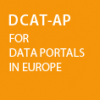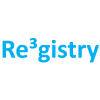Recommendation 7 | Principle 4: Reusability
Reuse and share information and data when implementing European public services, unless certain privacy or confidentiality restrictions apply.
Solutions
| List of all available solutions that implement this recommendation |
|---|

|
The CAMSS library gives access to existing assessments of technical specifications produced through the use of the CAMSS Tools. Each assessment is reusable partially or as a whole by the users. |

|
The Big Data Test Infrastructure enables the sharing and reuse of public administration data by allowing them to harness it for new big data driven solutions. |

|
CIRCABC provides a data exchange service allowing different entities to reuse and share data. |

|
The CEF Context Broker enables organisations (including but not limited to public administrations) to manage and share data in real-time. |

|
Crypto Tool enables data and information exchange between different parties in a secure manner. It helps enable public administrations to share information. |

|
CISE specifications are developed together with the key stakeholders using them. There is a dedicated Forum where key stakeholders at national level can exchange useful information. |

|
DCAT-AP facilitates the sharing of data, by making it more easily shareable and accessible. |

|
eArchiving building blocks allows for digital data preservation, hence ensuring its reuse in the long term. |

|
Being an information tool which helps users identify and recognise the certificates and attestations that are most commonly requested in the context of procurement procedures of different Member States, eCertis promotes the sharing and reuse of information and data. |

|
By allowing the identification of citizens and businesses from other Member States using online services, eID ensures the reuse and sharing of data. |

|
By allowing allow for the exchange of eInvoices between service providers and receiving authorities national and across borders, eInvoicing ensures the sharing of data. |

Location Framework Blueprint
|
Recommendation 11 of the EULF Blueprint stipulates that public administrations should reuse existing authentic data, data services and relevant technical solutions where possible. |

|
The common ontology and the technical specifications for the representation of powers and mandates enables the sharing and reuse of information in this domain. |

|
IMAPS helps to ensure that public administrations can seamlessly exchange data, information and knowledge when delivering digital public services by allowing Member States to test their level of interoperability. |
| Joinup facilitates the sharing and re-use of information and data for the implementation of European public services. | |

|
By providing practical guidance on the implementation of the sharing and reuse framework, the training modules help public administrations to better reuse and share information and data when implementing European public services. |

|
The multilingual classifications and terminologies allow public administrations to exchange and use data across borders. |

|
Online Collection Service, if used by public administrations, enables the export of collected data in a standard xml format, which then can be easily shared and maintained. |

|
The Data Visualisation catalogue is member driven, and contains useful tools, webinars, trainings and other information that can be reused in order to better process & visualise data. A dedicated data visualisation tutorial was designed on working on collaborative platforms (Wiki). It means that public organisation can, reuse it and contribute with new content. |

|
The Re3gistry enables the sharing and reuse of data across borders and sectors. |

|
Through its linked data interface, Ref2link can enrich user experience by adding meta-data from external sources to the detected references. |

|
The Reference Architecture ensures that any system developed for e-Documents enables their exchange. |

|
The use of ESS Statistical Enterprise Architecture helps to ensure the reuse and sharing of standardised statistical data across borders. |

|
This Sharing and Reuse Framework encourages checking the reusability of already existing solutions before developing new ones. |
|
LIMAPS v1.0.0 |
Question C2 of the Service Consumption section of the LIMAPS questionnaire assesses the legal behavioural interoperability specifications of the data, information, knowledge consumed by the public service, by determining the legal requirements they are subject to (licenses). |
|
OIMAPS solution v1.00 |
Question C1 of the Service Consumption section of the OIMAPS questionnaire assesses if the data, information and knowledge consumed by: |
|
SIMAPS solution v1.0.0 |
Questions C5 of the Service Consumption section of the SIMAPS questionnaire assesses the readiness of a public service to consume data coming from other MS by examining the means under which this data consumption takes place. |
|
TIMAPS solution v1.0.0 |
Question D12 of the Service Delivery section of the TIMAPS questionnaire assesses whether the public service delivery is based on already existing IT solutions and services. Furthermore, question C1 of the Service Consumption section of the TIMAPS questionnaire assesses the extent of the different data sources that a public service is able to consume, along with the circumstances under which it does so (ad-hoc, formal processes, etc.). The higher the number of different data sources that are consumed, the greater the maturity, efficiency and effectiveness of a public service is, as it is able to address the complexity of the harmonization and process of different data models, formats, etc. |








